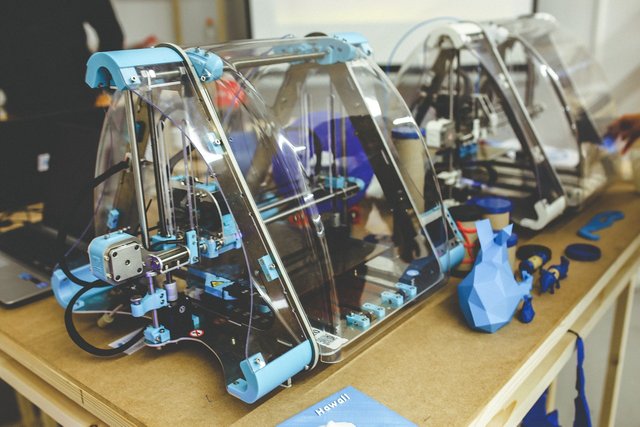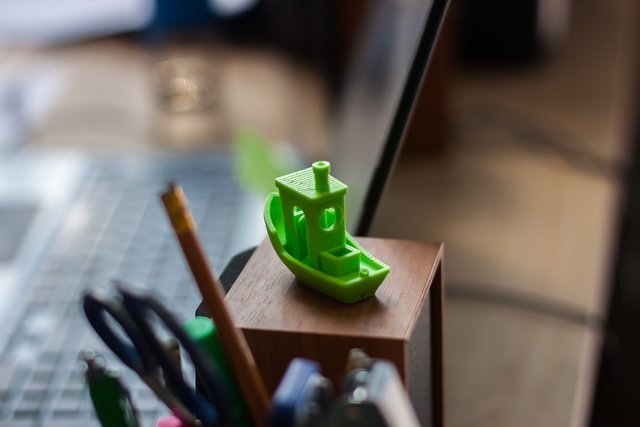The future of 3D printing and opportunities underneath
3D printing still has a long way to go to become mainstream print media solution!
3D printing is no more a science fiction but has ventured into a reality and has a long way to go with new concept of smart things and IoT getting traction all over the world. As Wohlers Associates estimated, the 3D printing market globally is expected to reach a staggering $21 billion by 2020 — quadrupling its size in just four years.
It is a revolution and revolution doesn't happen overnight. With 3D printing gaining traction all over the world, there’s some amount of skepticism and cynicism associated with it just like with any other revolutionary technology.

3D Printing model is the next big thing to happen to many industries like healthcare, automotive, electronics, and manufacturing etc.
3D printing is one such technology that has grown exponentially and supported many industries like automotive, healthcare, manufacturing, and electronics etc. It has now become easy for companies to design specific parts and graphics with detailed design, geometry and graphics with no extra costs, low wastages, hyper personalization and low production time. 3D printing has a history that started from 1980 with the advent of rapid prototyping technologies and now moved to even get 3D functional organs to save lives of thousands of people.
Some of the major challenges 3D printing have addresses very well is true rapid prototyping, rapid design iteration, low volume production, mass customization and product innovation renaissance.
Why 3D printing still has a long way to go?

According to experts, 3D printing is like a bomb waiting to explode, but still has a long way to go to become mainstream print media solution!
3D printing is being used for rapid prototyping, tooling and molds, digital manufacturing and personal fabrication. 3D printing invaded all these segments and is at the different stages in each of these. Rapid prototyping Molds and tooling is one of the segment where 3D printing has already being matured and still growing but at a steady phase. There are few things that are required for rapid adoption of 3D printing at the end-user as well as to adopt the 3D printing business models by printers as well:-
- Applications to be widely adopted – Though there are cost-effective and handy 3D printers that are available in the market these days, the demand is less. The reason being the less awareness about the day to day application of 3D printed products and how they can be part of our people lives. Similarly, there’s less interest from printers’ side to make it a B2C model than a well-established B2B product.
- Web to print software for 3D applications – 3D products need different kind of designing applications like CAD, Sketchup and other free online tools but very few web to print caters to this requirement. Web to print software provides basic product design tool and software that can cater to the normal printed products requirements like T-shirt, Business Cards, Flyers, Brochures etc. A full-fledged web to print software that can bridge the gap between end-users and 3D print manufacturers and let them design their own models is still something industry is missing. Having said that, a lot of work has been done in this area to make the products and solutions affordable, easy to use and less technical. Web to print or software that can align the process of 3D printing designing and manufacturing can be a right fit for this growing industry and will be easy to adopt for the customers that are already using web to print softwares.
- 3D printing is more of manufacturing - 3D printing is more of a manufacturing, and printers and print software vendors have to understand this. Software designed and processed adopted for printing needs a major upgradation when it comes to 3D printing usage. Web to print vendors are expected to design more sophisticated product design tool to be integrated with the 3D printers to get good outputs. Printers also need to ramp up their traditional printing processes and adopt this major shift of 3D printing. The challenge is to have low cost but efficient 3D print manufacturers so that it can be adopted easily with low barriers to entry.
- Lack in best practices and appropriate industry standards - Many manufacturing companies are trying to seek advice and expertise in defining what parts can be manufactured with 3D printing for low cost and high personalized production. Though industry has progressed a lot in terms of demand of 3D printed products, there’s an imbalance in terms of adoption of specific standards for producing parts of machines, electronics etc. This acts as an opportunity for research and development and providing expertise in the same area. Traditional printers lack the resources and skill to do the same but possess the acumen to understand the basic process of printing and utilizing the same in producing 3D printed parts.
- Lack of laws and governance - With 3D printing and manufacturing anything can be duplicated with low costs, this presents threat to the unprotected design independent of the intended quality or design measures, creating security concerns for the public and product designers.
- Addressing the Lack of in-house 3D Printing Expertise - Considering how fast 3D printing is advancing, it can be very difficult for organizations to attract the right talent and retain them. Design teams require more support as they learn to design for 3D printing and cross-train to speed up with the 3D Printing designs and processes. Large and medium-sized print corporations could consider a partnership opportunities with universities that have an already running 3D printing labs to deliver training to engineering students. The challenge of skilled manpower is crucial and can be addressed with the right collaborations coming in presenting opportunity for both the organizations and research wings working towards them.
The best of both the worlds
3D printing presents answer to most of the questions that question the existence of printing with the increase in digitalization. 3D printed products can not only be tagged with microchips and sensors but can be used to capture data from various point of contacts. Traditional printing has lot of opportunities lying underneath the revolutionary technology of 3D printing and with the combined efforts of industry, research universities that are high chances of making printing as physical. Posted from <a https://techatlast.com/3d-printing-future-opportunities/